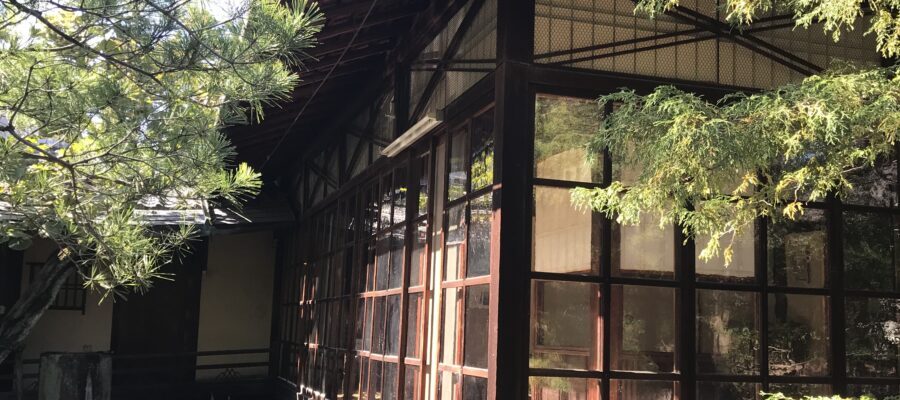七宝業を営まれた旧宅
京都の庭園を訪問する際によく参考にしている烏賀陽百合さんの著書「しかけに感動する『京都名庭園』」の中で紹介されていたのが、この並河靖之七宝記念館です。ここは同氏が住まいし、七宝業を営まれた旧宅であります。
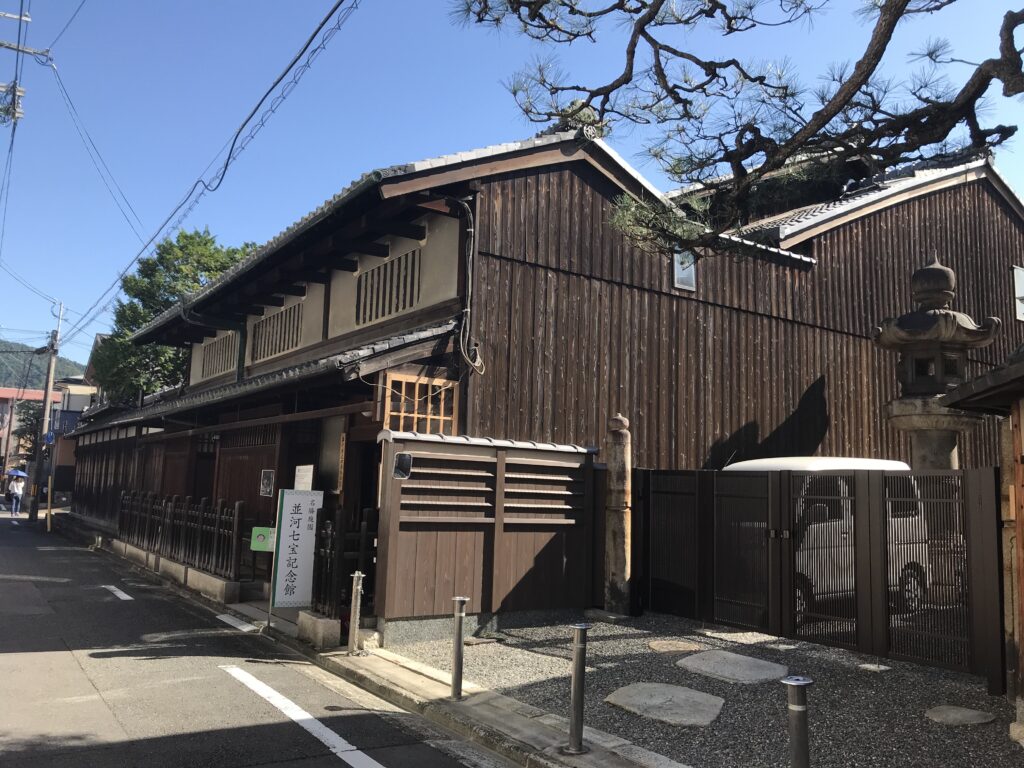
七代目 小川治兵衛が作庭
そういう訳で、本来は並河靖之氏の作品や、その製造過程の展示を目的に訪れる記念館なのですが、ここには七代目 小川治兵衛が手掛け、琵琶湖疏水の水を民家の庭に引いた庭園もあります。今回はその庭園も楽しませていただくことにしました。
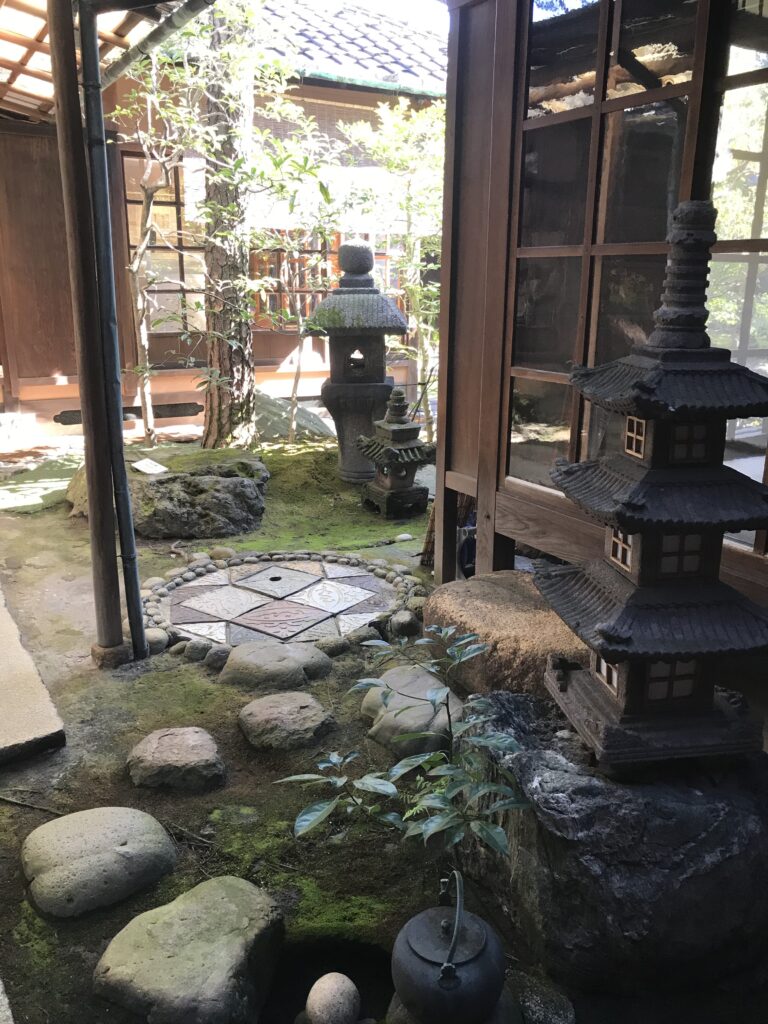
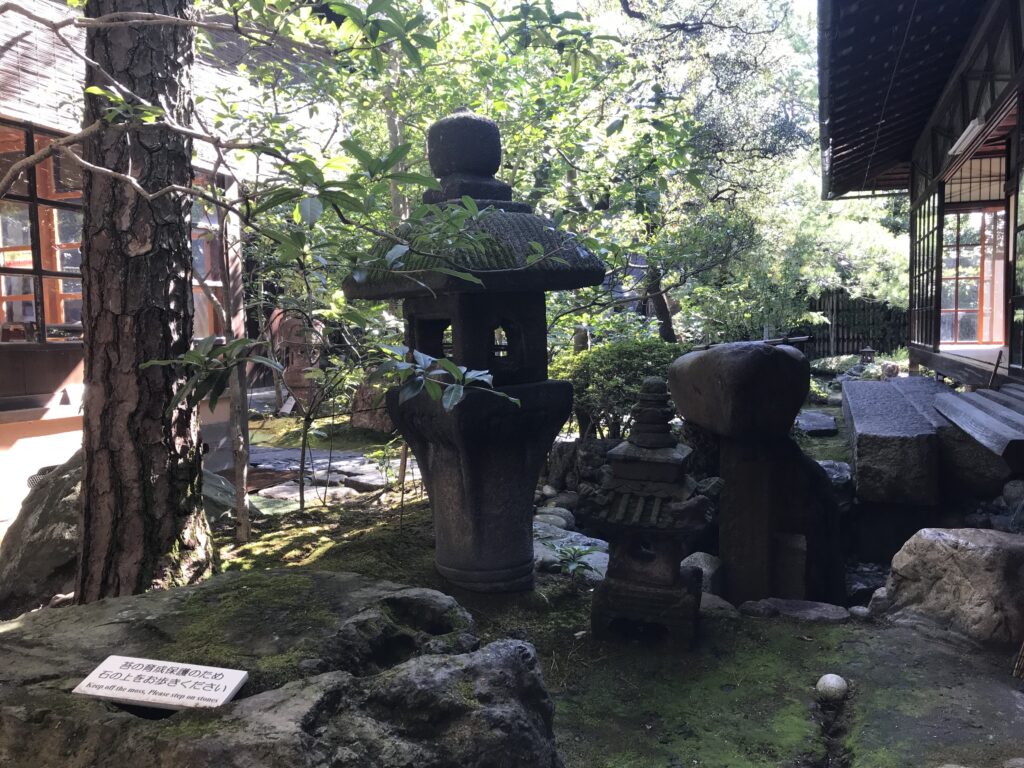
建物に入ると、まず七宝の作品を見ることができます。どれも緻密で美しいものです。残念ながら作品の写真撮影は許可されていないので、興味のある方は、是非記念館を訪問してみてください。邸宅内の建物を巡りながら、生産工程を理解できるような展示になっています。
池の上に建つ母屋
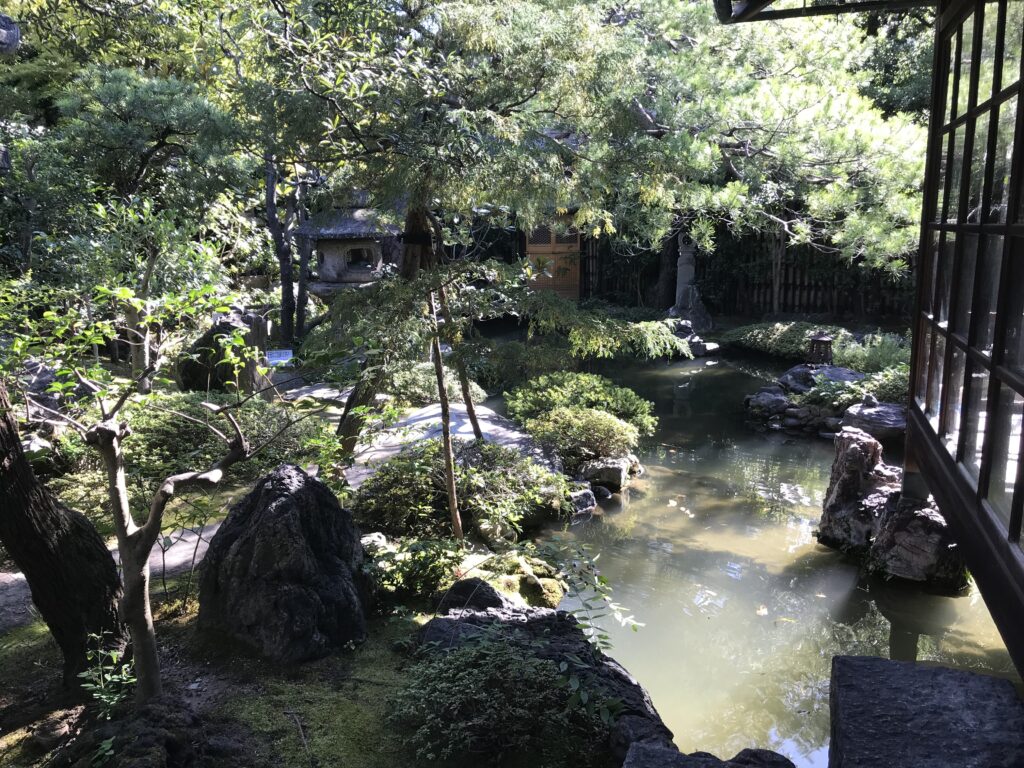
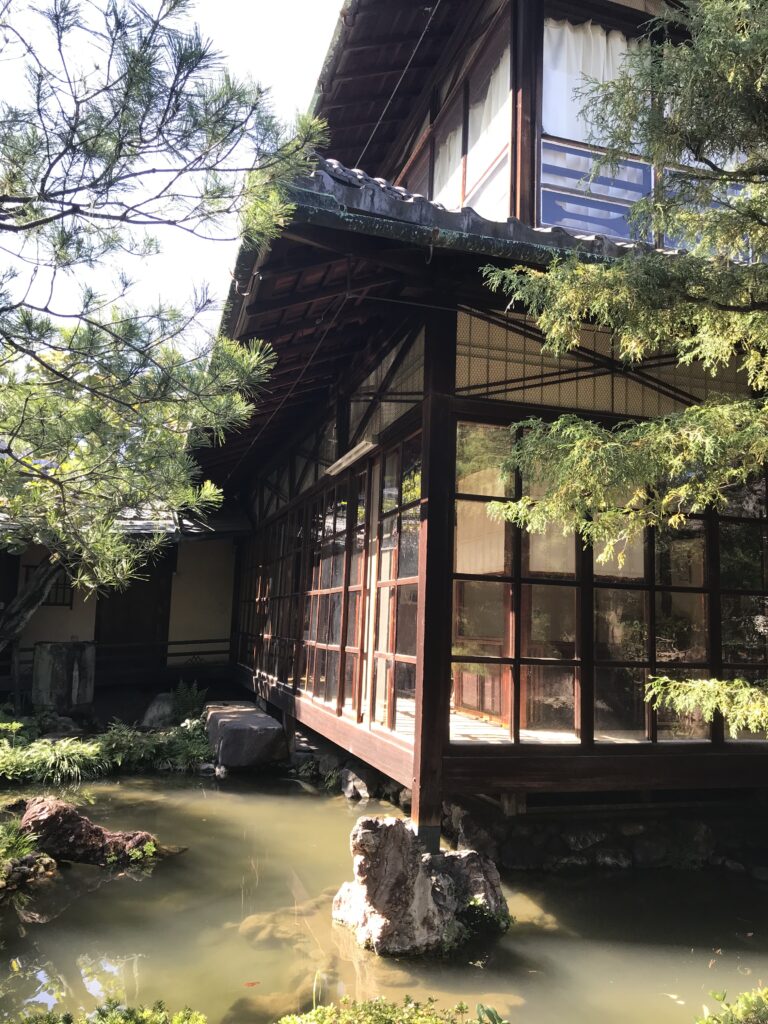
母屋に戻る際に、庭を拝見することになります。池の中に岐立する貴船石に母屋の柱の一本が乗っています。この写真をご覧になった方も多いのではないでしょうか。ここに来ると、どうしてもこのポイントに目が行ってしまいます。
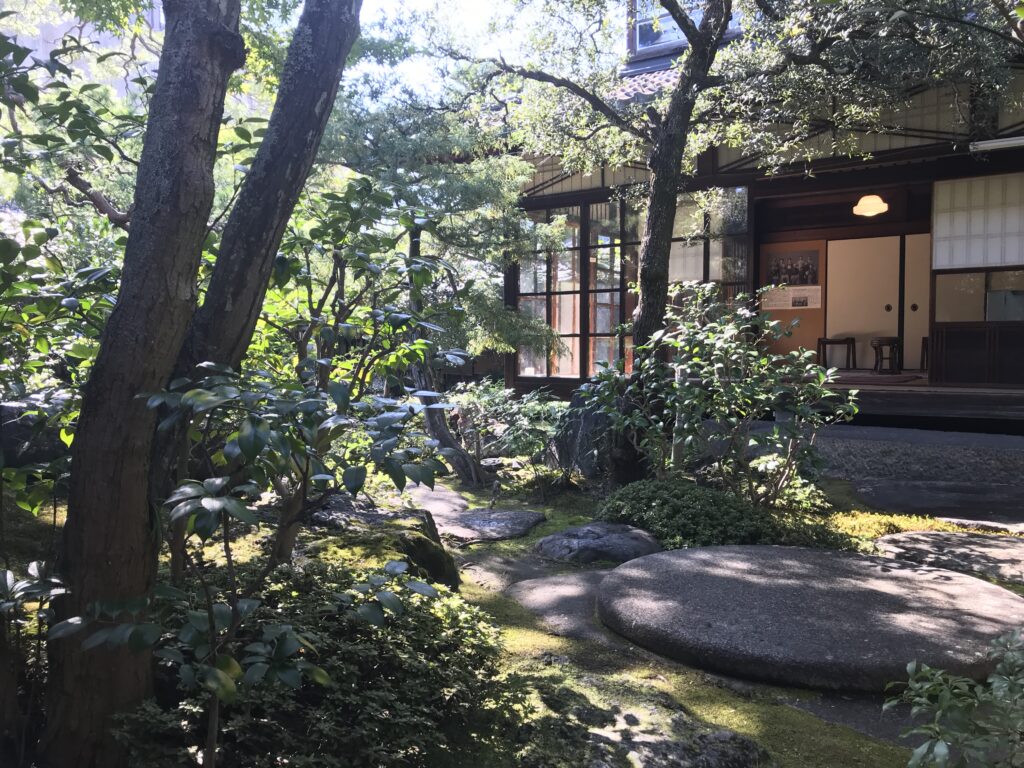
大きな飛石
また、飛石の中にひと際大きくて円形の石があります。どこかのお寺か神社の礎石だったのだろうと思われます。他にも真黒石や古河原を組み合わせたデザインなど、仕掛けがいっぱいです。いくつ発見できるか探索するのも楽しいと思います。地下鉄東西線の東山駅から歩いて3分ほどですので、近くにお越しの際は、是非お立ち寄りください。(完)
並河靖之七宝記念館が紹介されている書籍
烏賀陽百合さんの「しかけに感動する『京都名庭園』」に並河靖之七宝記念館の庭が紹介されています。
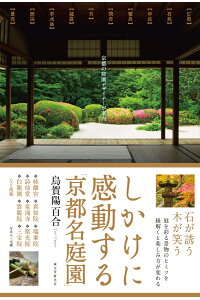
しかけに感動する「京都名庭園」 京都の庭園デザイナーが案内 [ 烏賀陽 百合 ]
価格:1,760円
(2021/5/2 18:44時点)
感想(1件)
Yasushi Namikawa’s Cloisonné Memorial Museum
Former home of a cloisonne enameling business
Yasuyuki Namikawa’s Cloisonné Memorial Museum was introduced in the book “Kyoto’s Great Gardens” by Yuri Ugaya, which I often refer to when visiting gardens in Kyoto. This is the former home of Yasuyuki Namikawa where he lived and operated his cloisonne enamelware business.
Garden created by Ogawa Jihei VII
This is why I visited the memorial hall to see Yasuyuki Namikawa’s works and the process of making them, but there is also a garden here, which was created by Jihei Ogawa VII and drew water from the Lake Biwa Canal into the garden of a private house. This time, I decided to enjoy the garden as well.
As I entered the building, the first thing I saw were the cloisonne enamel works. They were all very detailed and beautiful. Unfortunately, photography of the works was not allowed, so if you are interested, please visit the memorial hall. The exhibition was designed to help visitors understand the production process as they tour the buildings in the mansion.
The main building on the pond
On my way back to the main house, I had a look at the garden. One of the pillars of the main house rested on the Kibune stone that stood in the pond. I was sure many of you had seen this picture. When I came here, I couldn’t help but look at this point.
Large stepping stones
Among the stepping stones, there was a particularly large, circular stone. It was probably the foundation stone of some temple or shrine. In addition, there were a lot of other tricks, such as designs that combined maguro (black) stones and old riverbeds. It will be fun to explore and see how many you can find. It is a three-minute walk from Higashiyama Station on the Tozai Subway Line, so if you are in the neighborhood, please stop by. (End)
Musée commémoratif du cloisonné de Yasushi Namikawa
Ancien siège d’une entreprise d’émaillage cloisonné
Le musée commémoratif du cloisonné de Yasuyuki Namikawa a été présenté dans le livre “Kyoto’s Great Gardens” de Yuri Ugaya, auquel je me réfère souvent lorsque je visite des jardins à Kyoto. Il s’agit de l’ancienne maison de Yasuyuki Namikawa où il vivait et exploitait son entreprise d’émail cloisonné.
Jardin créé par Ogawa Jihei VII
C’est pourquoi j’ai visité le hall commémoratif pour voir les œuvres de Yasuyuki Namikawa et le processus de leur réalisation, mais il y a aussi un jardin ici, qui a été créé par Jihei Ogawa VII et qui tirait l’eau du canal du lac Biwa dans le jardin d’une maison privée. Cette fois, j’ai décidé de profiter également du jardin.
En entrant dans le bâtiment, la première chose que j’ai vue, ce sont les œuvres en émail cloisonné. Elles étaient toutes très détaillées et magnifiques. Malheureusement, il n’était pas permis de photographier les œuvres, alors si vous êtes intéressés, veuillez vous rendre dans la salle commémorative. L’exposition a été conçue pour aider les visiteurs à comprendre le processus de production lorsqu’ils visitent les bâtiments du manoir.
Le bâtiment principal sur l’étang
En retournant à la maison principale, j’ai jeté un coup d’œil au jardin. L’un des piliers de la maison principale reposait sur la pierre de Kibune qui se trouvait dans l’étang. J’étais sûr que beaucoup d’entre vous avaient vu cette photo. En venant ici, je n’ai pas pu m’empêcher de regarder ce point.
Grands tremplins
Parmi les tremplins, il y avait une pierre circulaire particulièrement grande. Il s’agissait probablement de la pierre de fondation d’un temple ou d’un sanctuaire. En outre, il y avait beaucoup d’autres astuces, comme des dessins qui combinaient des pierres maguro (noires) et d’anciens lits de rivière. Il sera amusant d’explorer et de voir combien vous pouvez en trouver. Il se trouve à trois minutes de marche de la station Higashiyama de la ligne de métro Tozai, alors si vous êtes dans le quartier, n’hésitez pas à vous y arrêter. (Fin)
